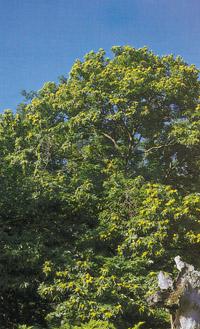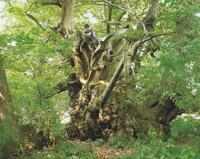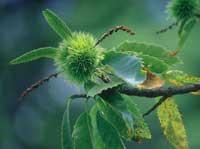Looking for forests in history
2004/12/01 Roa Zubia, Guillermo - Elhuyar Zientzia Iturria: Elhuyar aldizkaria
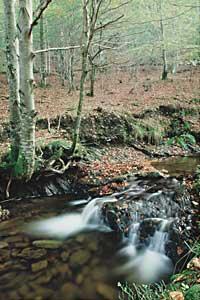
Stuck between trees, we feel like a flight: it seems that the technological society does not reach the heart of the forest. We know it is not true, but it is a nice fraud. Sometimes, it is enough not to see roads to make us feel that we are in the place of residence of our ancestors. A nice fraud, yes. But not only for the proximity of the road, but also for the fraud of the idea of residence of our ancestors.
“People believe that the situation of the forest has been better than the present in all times of the past,” says the historian of the Aranzadi Society, Álvaro Aragón. “But, for example, today the XIX. In Euskal Herria there are three times more trees than in the nineteenth century”.
Centuries ago, man began to transform the forest, what need, what need. And, therefore, it is difficult for us to have a direct idea of the forest of Basque origin. How was the forest of origin?
Undoubtedly, the present forest is not the origin but the result of the industry of the last centuries. The activity that brings money.
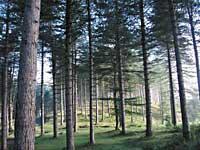
As for forests, the paper sector is the one that has had the most force in the last hundred years. They needed a lot of wood to make paper. A lot and fast. For this reason, the Provincial Council of Gipuzkoa and Bizkaia created forest services in 1905. One of the objectives was to plant fast-growing trees. Many species from the outside were planted to prove their suitability.
In the surroundings of the paper fields, the radiata pine was the best option. And that's what they planted in many places and what they learned to exploit. However, other types of trees have remained, such as the Douglas fir and the bush. Laritza is a Japanese pine tree that totally loses its leaf in winter, typical of mountaineers, but absolutely of the forest of origin.
Expurge hard hard
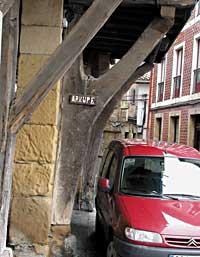
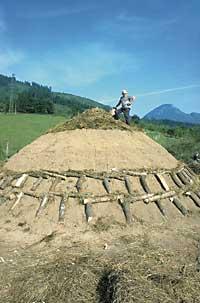
It cannot be said that these fast-growing foreign trees represented the traditional forest. In fact, before the paper industry had that great success there was a great shortage of forests. And it is understandable, who wants to own a forest if it does not yield net yield? XIX. In the eighteenth century there were few reasons to devote themselves to forestry activity and many for deforestation. They had many resources outside the forest.
“Corn revolutionized the XVIII. According to Aragon”. “The high yield of corn brought with it growth in the population. At the same time, the need for iron, as well as shipbuilding, agriculture and livestock increased.”
Livestock changes also have much to say in forest management. The care of the sheep was extended at the time in Euskal Herria. “In Legazpi there is a document on sheep dating from 1750, when the first flock came to the people.” Until then cows and pigs predominated, although goats and mares also grew. Cows and pigs can graze in the forest, but sheep need grass. By proliferating the sheep, many forests were depressed. Aralar is an example of this.
The forest owners made a fortune selling that wood. That money was essential, among other things, to pay for the Carlist wars. In addition, there was deamortization and the new owners preferred money than the forest. They sold the original Basque forest. Anyway, was that forest original? Let's take a step back.
Jarabarra and rear trees
XVII and XVIII. The industry of the nineteenth century needed many trees and pastures depressed by man were very scarce at that time. In the industry, the steel and naval industry was the one with the greatest strength, and both requested the exploitation of the trees. However, each of them asked for a type of forest. The first needed wood to make coal, that is, many small branches; the second, large, curved parts to make containers.
Siderurgy and shipbuilding. Both needed large quantities. Both were precious sources of goods, both in the hands of different authorities.
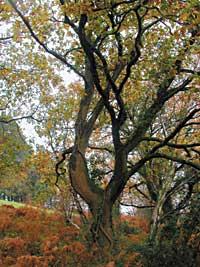
“XVI and XVII. For centuries the king and the province itself managed the forest. And the interests of both were contradictory. The Guipuzcoan council wanted to take the ferns forward. It must be taken into account that at that time there were lords of the town councils, that is, owners of the ferns. The shipbuilding was in the hands of the king. That is why there was always competition,” says Aragon.
However, there was a solution: the syrup and the rear trees could be used. In fact, both industries demanded different types of forests, but not different. Through these techniques, the same type of tree responded to both needs.
In both cases, the basic idea was to worsen the main branches of the tree to obtain tables of this aspect, and use the upper branches to make coal. In addition, if they had oak, oak, beech, etc., they also bore fruit. Three uses, therefore, for a single tree.
Old market of wood
We cannot consider as forests of origin those formed by trees that were transformed for three uses. We have to go back in history to look for them again. However, the unaltered forest is not easy to find. Before using the technique of the shrubs and trees, the trees were exploited in another way: in general, droplets and chants were growing.
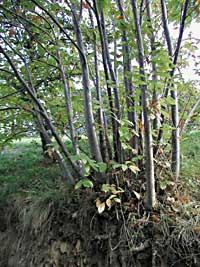
The leaks were long trees. It was dedicated to the manufacture of wood for coal and was also used for the manufacture of domestic rods, masts of ships, etc. The builders of the time did not double the leaks, but they were looking for what were actually erroneous.
The txaradios were mainly chestnut and hazelnut. They were cut every 15 years and grew again. And the aspect that the branches adopted at that time gave many possibilities. On the one hand, from these branches were manufactured and sold small rods, for example, to make spades (international market prosperous). On the other hand, the strips were extracted, that is, the “chapitos” of wood for use in the industry of the winery and the basket.
These trees, therefore, met many needs, maintained the market and basic diet. We must not forget that at that time corn was not the usual food and that art, oak, walnut and chestnut were the main source of the fruits.
XV. From the twentieth century the population grew rapidly, and all of them had to eat. In general, society needed more food, iron and wood than in the Middle Ages. Therefore, it was essential to protect the forest. Therefore, they began to take the first measures against elimination. In Gipuzkoa, for example, in 1548 a new regulation was elaborated: by law each town had to plant five hundred oaks or chestnut trees every year.
Forest of the ancient village
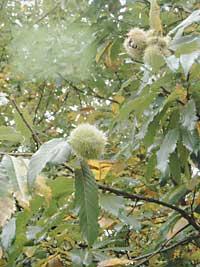
Until the expansion of the population, in the Middle Ages the forests were not very controlled. In other European countries, kings imposed strict rules to control forest heritage, such as in England, but not in Navarre. The forests belonged to the king, yes, but it did not do that control.
In addition, deforestation was not considered a problem. The population was not very large and there was no reason that the goods of the forests were in danger.
So, was the forest of origin? The truth is, not at all. Some species of trees were not native. The chestnut, for example, had passed a thousand years, but no more. According to the researchers, it was brought by the Romans. It is a belief based on documents of Roman historians. “When Plinio and Estragón mentioned the territories here they said that people ate acorn. They said nothing about the chestnut,” says Aragón.
And before, what? The truth is that the time before the arrival of the Romans is not so known. The people of the Neolithic made the first clareos in the forest to start agriculture. Of course, they were very bald, but it is worth mentioning. In the opinion of palinologists, these small simplifications facilitated the introduction of beech in the Basque forest.
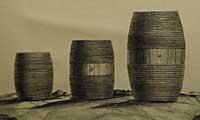
Palinologists study pollen and seeds and affirm that there is no footprint of beech until 5,000 years ago. There were no beech trees; little by little it arrived by the Adriatic, accompanied by small clareans.
Knowing all this, we can go back to the initial idea: beech and leaf, pine and garoa, chestnuts and brown leaves impregnated by rain... Which of them should be discarded to be the original forest? There may not be 'original' forests. Perhaps never. We will have to accept the season.

Gai honi buruzko eduki gehiago
Elhuyarrek garatutako teknologia




